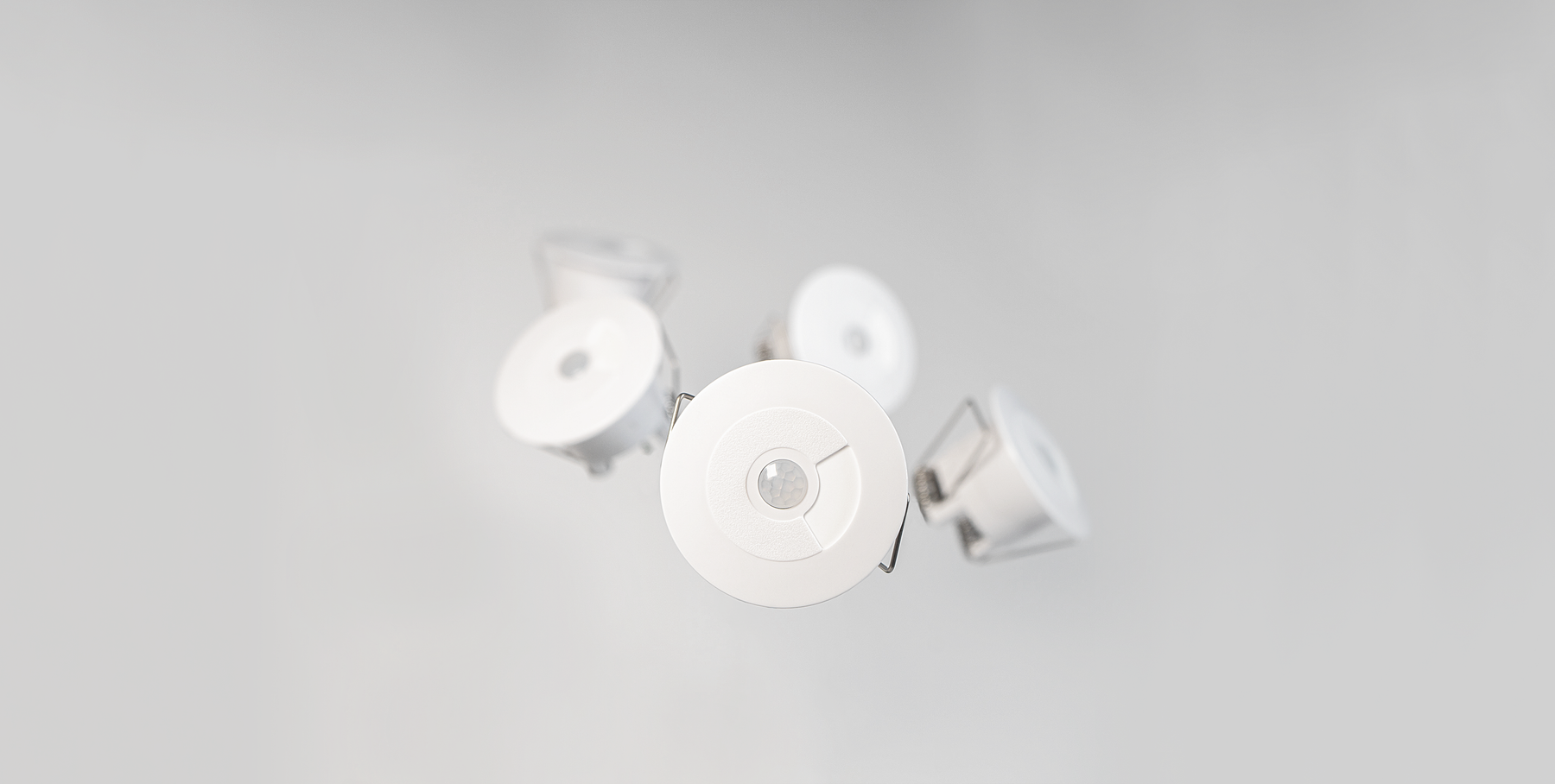
A GUIDE TO MOTION SENSORS BEAM PATTERNS
The Faradite Motion Sensor 360 range uses PIR (passive infrared) sensor technology. In the early days of motion sensors, other technologies were used, however today PIR is by far the most commonly used tech for these devices. PIR sensors are simple and effective, and do not wear out with time making them low-maintenance and low-cost in the long term. The way they work is fairly simple; each device has a pyro-electric sensor, which sits behind a lens, and detects infrared radiation from the room.
All objects which emit heat energy, such as people or animals, emit this heat in the form of electromagnetic radiation. This radiates at infrared wavelengths which are invisible to the human eye, but can be detected by the pyro-electric sensor. The sensor is covered by a lens, which has many facets that focus the infrared radiation from the object onto the pyro-electric sensor, creating a beam pattern.These beams fan out from the sensor, spreading across the room or space.

The sensor detects motion when two or more beams are ‘broken’ by fast changing levels of electromagnetic radiation. The sensor will pick up the movement of a person as when they move across the space and pass through the beams they are causing the level of electromagnetic radiation in that beam to rapidly change. As a result the sensor will be triggered, sending a signal back to the control system, which will in turn send out its own signal to do whatever it has been programmed to do, for example, turn on specific lights.
The Faradite Motion Sensor 360 range all require a temperature difference of only 4 degrees celsius to detect an object or person, this small temperature difference is what makes the Motion Sensor 360 range one of the most sensitive sensors on the market.
If you visualise the PIR beams, they take on the form of a cone, coming to a point at the sensor itself and widening in all directions as they get further away from the sensor. The number of beams remains the same however. This causes the sensor to be less sensitive the further away from the device you are, as the further away you are, the larger the gaps between each beam will be. If you were to stand very close to the sensor, multiple beams will be broken by only a small movement, whereas if you were to stand further away, a larger movement would be required to break the beams and trigger the sensor. The beams are also closer together at the centre of the ‘cone’ as opposed to the outer edges.

Another factor to consider is that on the outer edges of the detection area, the beams will be lower to the ground due to the cone-like shape, meaning high up movement might not be detected. For example if a sensor was installed in the ceiling of a ground floor room, with a staircase descending into the room, the sensor might not detect movement on the higher parts of the staircase, and would only trigger as you reached the lower stairs or floor level.

When planning the installation of PIR motion sensors it is important to consider other hot/cold air emitting objects. An object which emits hot/cold air may trigger the sensor if the air moves through the air at a high/low enough temperature and is able to quickly break more than one beam. For example, a radiator would not trigger the sensor as although it is warm, it is stationary and heats the air slowly. However other types of heaters with strong fans can produce a large amount of heat quickly, and move the hot air to circulate around the room at a fast pace. This can be seen by the PIR as a ‘wave’ of heat and if it passes through multiple beams, the sensor might mistake this as human movement.
A final consideration is the use of glass in the space. A PIR motion sensor will not detect movement through glass. This is because the glass will block the heat being emitted from the person or object, thus the device will not be able to detect it. For example, a PIR motion sensor will not be triggered by movement on a staircase if it has a glass panel railing, even if the person can be seen.

Effective use of PIR Motion sensors requires an understanding of how they work, and care must be taken when planning where to install them to allow them to be as accurate as possible, and to ensure that they are never falsely triggered. They are long lasting, low-maintenance products and their potential uses are endless, your imagination really is the limit!

